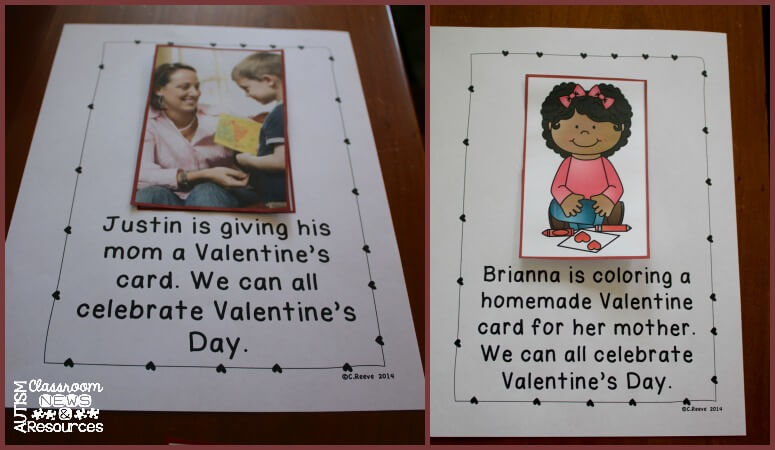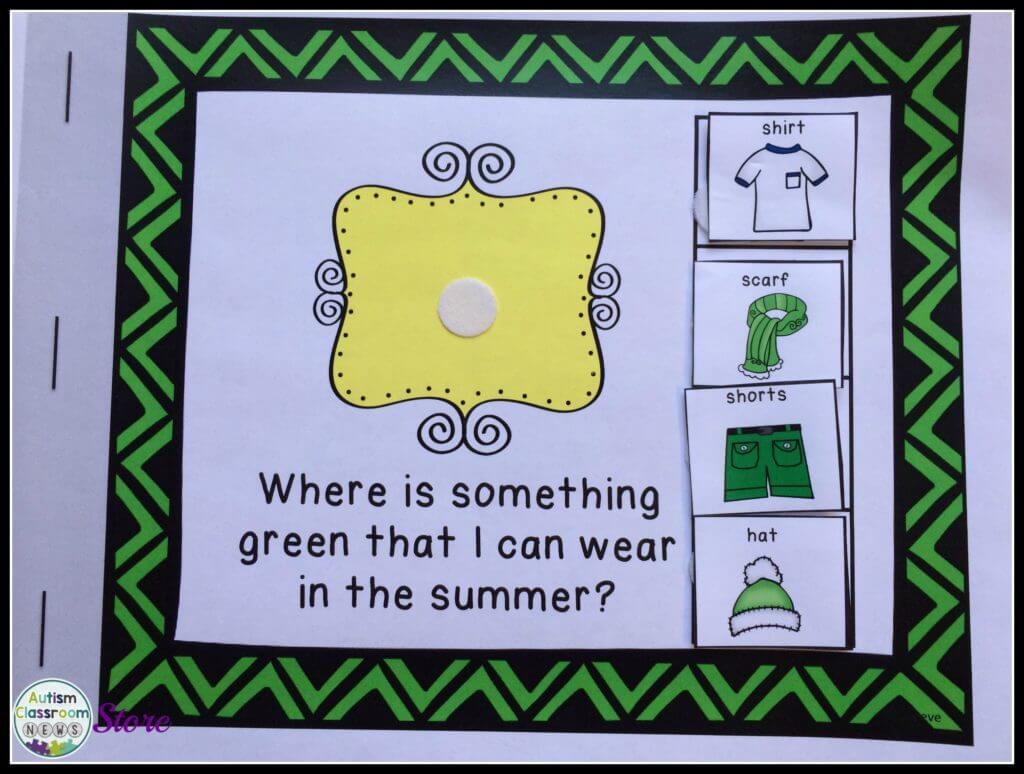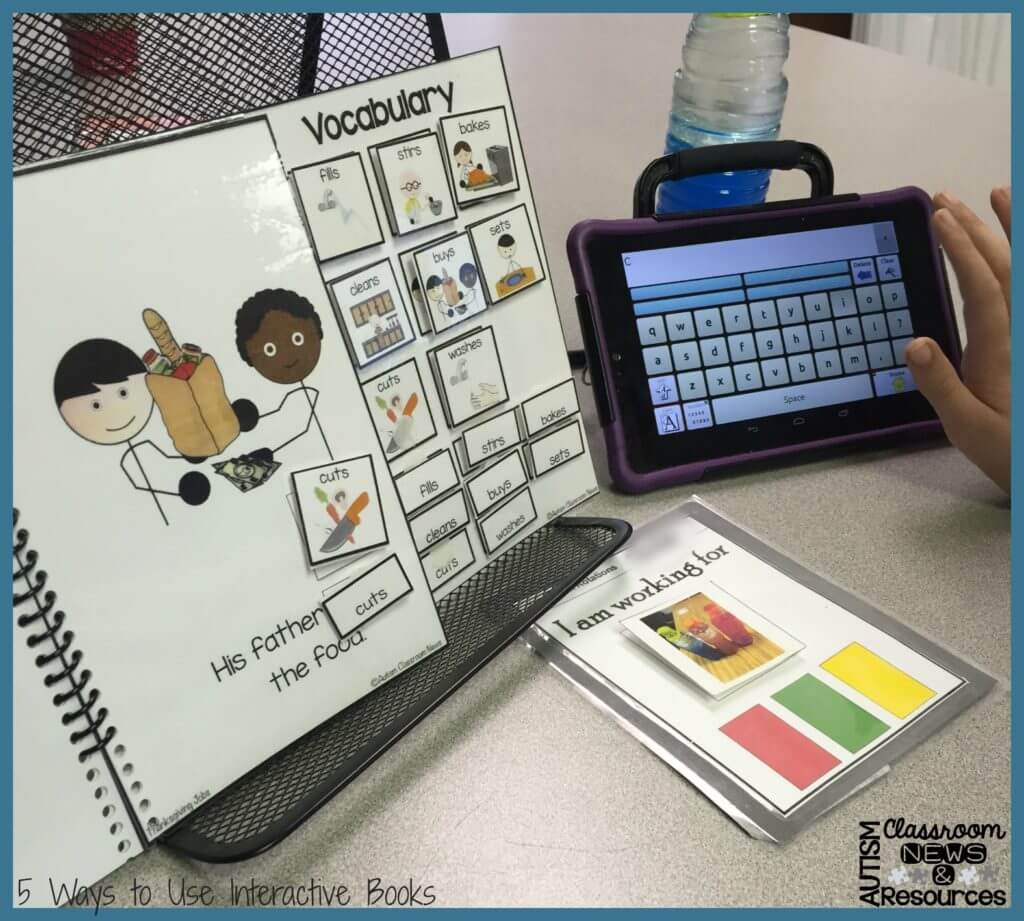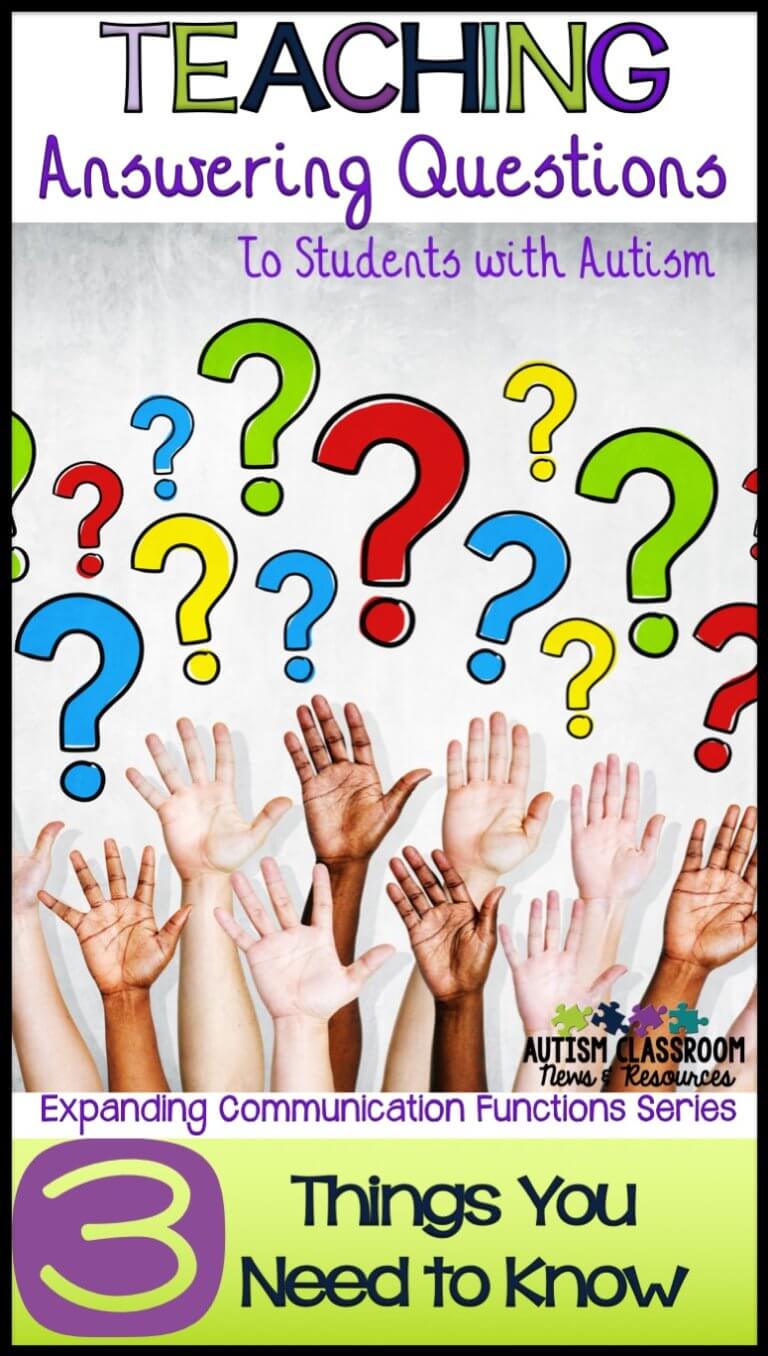Sharing is caring!
I love using interactive books to get non-verbal and Augmentative Communication System (AAC) users involved in story time, reading, and literacy activities. To really focus on augmentative communication use through these resources I am sharing three sets of fun goals that will help promote its use!
One of the things that got me started with interactive books was finding ways to include students who are nonverbal or use augmentative communication systems in story time as well as reading and literacy activities. But I know that sometimes it’s hard to come up with goals and objectives when you need them.
So I wanted to include some goals and objectives for how I use interactive and adapted books to promote augmentative communication use as part of the series on interactive books. You can of course use AAC in the same ways that you use the books for the goals in my previous post, but here are 3 sets of goals specifically aimed at using augmentative communication.
Using Vocabulary with Augmentative Communication
Probably one of the easiest and most common ways to combine interactive books and vocabulary is to have the students find the missing vocabulary word. This can be done in a variety of ways but should always be done in a natural way.
For instance, you don’t want to say “find milk” on the device–you want there to be a reason to find milk. That’s where interactive books come in. Most interactive books, like mine, are designed to have interactive pieces that students can exchange or put in the book based on the text being read.
For some students you can use just the pictures as a low tech augmentative communication strategy. For students with speech generating devices, can use those same pictures to put on switches or put the same vocabulary on their device. Or you could have them find the pictures and then use their device to say the sentence. The expectant pause when you get to the place where they have to find the word/picture is critical so they know it’s time for them to speak as well.
Goals/Objectives:
- Given an adapted text, Joe Student will select the correct vocabulary word when shown 4 pictures to complete (or match) the text with 80% accuracy.
- Given an adapted text with pictures, Joe Student will read the sentence in the book using his speech generating device, finding the word to complete the text with 80% accuracy.
- Given an interactive book, Joe Student will find the targeted picture vocabulary word and say its name using his speech generating device with 80% accuracy.
- Given interactive books, Joe will increase his vocabulary by recognizing 8 new common vocabulary words by reading them using his speech generating device with 80% accuracy.
Using Augmentative Communication to Participate in Reading the Text
My original adapted books and my Valentine’s Interactive Books have a repeated phrase on each page of the book. So for instance, each page ends with a phrase (e.g., We can all celebrate Valentine’s Day.).
This was done to make the text predictable but also to allow for students to verbally, or with AAC, fill in the phrase with each page. It gives the student using augmentative communication the opportunity to read the book and participate in the story telling.
 Goals and Objectives:
Goals and Objectives:
- When reading a book with a repeated phrase, Sally will independently use her speech generating device (or a switch) to read the repeated phrase with 80% accuracy.
- [Keep in mind that this might involve a student using an iPad app to read the sentence by finding each word, or the student may use one button or switch to say the whole word. You can specify this in the goal depending on the needs of the student.]
- Sally will participate in reading an adapted text, using her speech generating device (or switch) to read a repeated phrase to the class at the right time independently on 9/10 pages.
Describe Characteristics of Items or Actions on the Page
We are all trying to make sure we work on language and communication that goes beyond just basic requests and naming nouns. So another way to use AAC with interactive books is to have the students describe what is happening.
On many interactive books, this is a typical literacy and language activity we do with all our students just like with any type of book. Some books, however, require the reader to identify items with specific characteristics. You can use those to get the student talking about the different characteristics (e.g., color, size, number, etc.).
So in the example below, the student has to find the green one you wear in summer…so it’s working on two characteristics. This is a great time for him to tell you about it, since you just primed him. Or have him describe all four items and find the right one.

Goals / Objectives
- When given an adapted book with multiple picture choices that differ on two dimensions, John will describe the items by color and feature using his speech generating device with 90% accuracy.
- When given an adapted book with multiple picture choices that differ on two dimensions, John will use his speech generating device to tell the reader of the book which picture to choose by describing it (e.g., the green shelf) with 90% accuracy. [I like this one because I like the kids using AAC to use their language to tell other people–including me–what to do. It’s often very reinforcing for them!]
- When given an adapted book with a descriptive phrase (e.g., Richard is throwing a snowball) and multiple pictures of characters in actions that are the same or different along at least 2 dimensions (e.g., a boy throwing, a girl throwing, a boy sitting, a girl sitting), John will describe which picture the reader should choose to match the picture in the book (e.g., the boy throwing) using his AAC device with 80% accuracy.

So those are just some ways you can use interactive books with AAC. One of the things I love about this type of book is that they are so versatile and you can use them for everyone in the room in one way or the other.








